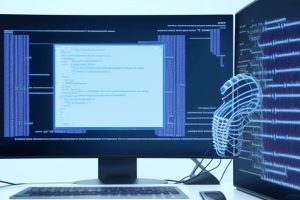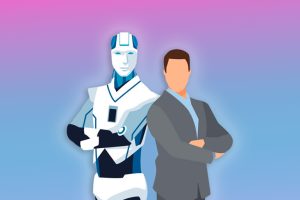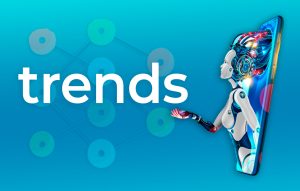
Artificial Intelligence (AI) detectors, the unsung heroes of the digital realm, boast a remarkable ability to identify patterns, anomalies, and meaningful information amidst vast oceans of data. From spam filters in our email inboxes to fraud detection systems in financial institutions, these intelligent algorithms have become integral to our modern lives. But have you ever wondered how these AI detectors work their magic? Strap in, as we embark on an exciting journey into the inner workings of these data-savvy geniuses.
How do detectors work? General principles
At the core of AI detection lies the concept of machine learning, a field that empowers machines to learn from experience and improve their performance over time. AI detectors rely on various techniques within the machine learning umbrella, such as supervised learning, unsupervised learning, and reinforcement learning, to accomplish their detection missions. Let’s dive deeper into each of these approaches.
1.Supervised Learning: Suppose we want our AI detector to tell apart spam emails from legitimate ones. By feeding the AI system with a massive dataset containing both spam and non-spam emails, it learns to recognize patterns specific to unsolicited or harmful content. The system then utilizes this knowledge to identify similar patterns in new and unseen emails, segregating the spam from the desired messages
2.Unsupervised Learning: In scenarios where labeled training datasets are scarce or nonexistent, unsupervised learning comes to the rescue. Here, an AI detector analyzes incoming data without prior knowledge of the desired output. It examines the data’s inherent patterns, clusters, or anomalies to detect abnormal behavior or extract valuable insights. For instance, credit card fraud detection systems employ unsupervised learning to identify irregular transaction patterns that might indicate fraudulent activity.
3.Reinforcement Learning: Imagine teaching an AI detector to recognize and respond to different situations based on rewards or penalties. Reinforcement learning trains the AI system through interactions with its environment. It learns from trial and error, adjusting its actions to maximize rewards and minimize penalties. This approach finds applications in diverse fields, ranging from autonomous vehicles learning to navigate through traffic to malware detectors refining their ability to spot malicious code.

Besides adopting specific learning techniques, AI detectors often rely on advanced algorithms and statistical models to enhance their accuracy. These algorithms may include decision trees, neural networks, support vector machines, or even state-of-the-art deep learning architectures like convolutional neural networks (CNNs) and recurrent neural networks (RNNs). These algorithms form the backbone of AI detectors, enabling them to process vast amounts of data swiftly and make informed decisions.
Real-time detection is a fundamental requirement for AI detectors, as they often operate in dynamic and fast-paced environments. To meet this demand, techniques like streaming analytics and real-time event processing come into play. By continuously monitoring incoming data streams and performing rapid analysis, AI detectors can swiftly flag potential risks or abnormalities, allowing for timely intervention and prevention.
The performance of an AI detector is highly dependent on the quality and quantity of the training data it receives. The system needs access to a diverse range of samples to ensure it can effectively recognize various patterns and adapt to ever-evolving threats. Furthermore, continuous updates and retraining are crucial to ensure that the detector remains resilient against emerging threats and maintains its effectiveness.
However, like any tool, AI detectors have their limitations. They rely heavily on the quality of training data, and their decisions may be influenced by biases present in the dataset. Biased data can lead to biased outcomes, inadvertently perpetuating existing societal inequalities or reinforcing discriminatory practices. Therefore, it is crucial to develop robust evaluation processes and ethical guidelines to minimize these biases and ensure responsible use of AI detectors.
As we delve deeper into the realm of AI detection, exciting advancements are on the horizon. Researchers are exploring innovative techniques such as transfer learning, federated learning, and explainable AI to address existing challenges and unlock new potentials.
How do text detectors work?
AI text detectors usually employ a variety of nifty natural language processing (NLP) techniques to analyze and classify text. These super detectors are designed to spot patterns, grasp context, and pinpoint specific elements within the text. Here’s a simplified breakdown of how they work:
Preprocessing: The text gets cleaned up and tokenized, breaking it down into individual words or characters. This step might involve ditching punctuation, converting text to lowercase, and handling special characters with care.
Feature Extraction : Relevant features or cool characteristics get extracted from the text. This could be word frequencies, n-grams (sequences of adjacent words), syntactic structures, or semantic insights.
Model Building: A machine learning model gets trained with some helpful labeled data. The model learns the swingin’ patterns and connections between the extracted features and the corresponding text categories or labels. Various rad algorithms can be used, like support vector machines (SVM), naive Bayes, or deep learning models like recurrent neural networks (RNNs) or transformers.
Classification: Once the model is all trained up, it can classify new texts that it hasn’t seen before into pre-set categories or make binary predictions (like distinguishing between spam and non-spam). The model assigns a probability or confidence score to each category, putting forth a hunch on the text’s likelihood of belonging to that category.
Postprocessing: Depending on the specific task, postprocessing steps might come into play. These steps could include doing away with low-confidence predictions, lemmatizing (reducing words to their base form), or dropping stop words (commonly used words with less meaning).

What about graphics detectors?
Graphic AI detectors trained on large datasets containing labeled images, allowing them to identify patterns and features in different types of graphics.
At their core, graphical AI detectors consist of convolutional neural networks (CNNs), which are designed specifically for image recognition tasks. These CNNs employ layers of interconnected neurons that process the input image and extract important visual information.
The initial layers of the CNN detect simple features like lines, edges, and textures, while deeper layers extract more complex features such as shapes, contours, and color gradients. The output of these layers is then fed into a classification layer, which makes predictions about the presence or absence of specific objects or visual elements.
To improve their accuracy, graphical AI detectors undergo a training process known as supervised learning. During this training, the detectors are presented with numerous images labeled with the objects or elements they need to detect. These labels serve as ground truth, allowing the detectors to learn and adjust their internal parameters to make accurate predictions.
Through this training process, graphical AI detectors actively learn to recognize a wide range of visual elements such as human faces, animals, vehicles, symbols, and more. They become capable of identifying and localizing these elements within images or videos with impressive speed and accuracy.

Conclusion
In conclusion, AI detectors employ various machine learning techniques like supervised learning, unsupervised learning, and reinforcement learning to identify patterns, anomalies, and meaningful insights within massive datasets. These detectors utilize advanced algorithms, statistical models, and real-time processing to achieve accurate and timely detection. However, it is equally essential to address potential biases and ethical considerations associated with their use. As we witness the constant evolution of AI technology, the future of detection holds immense promises and boundless possibilities.




